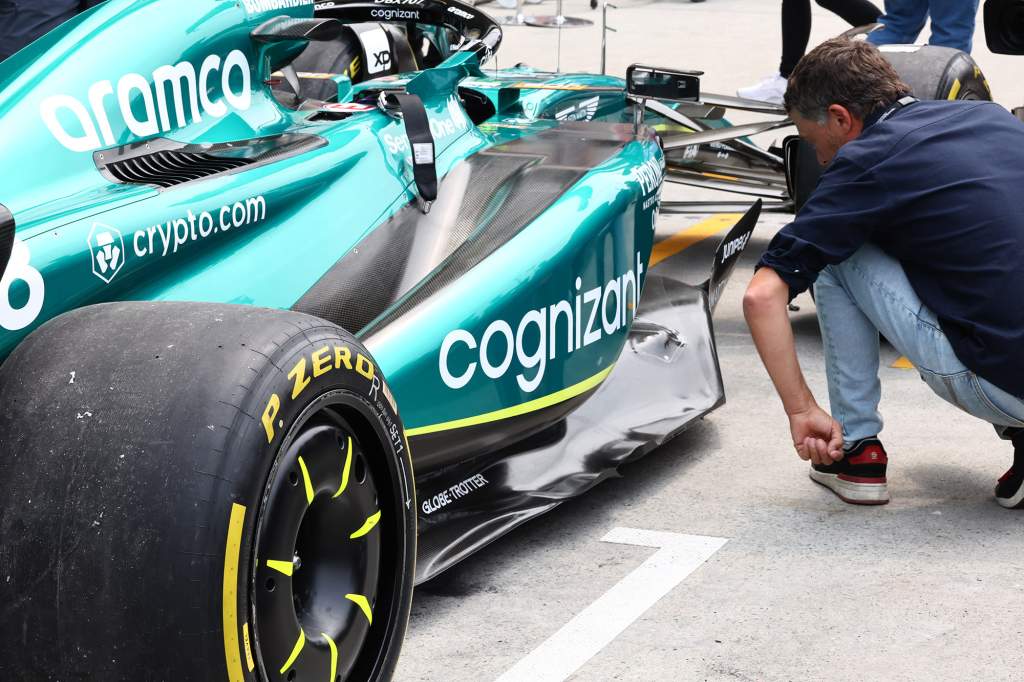Up Next

The Aston Martin Formula 1 team’s new mega factory is based at Silverstone, so I’m pretty sure you could call the British Grand Prix its home race. However, with the owner Lawrence Stroll and his son, who is also one of the drivers, being Canadian you could also say the Montreal race is just as, if not more, important for them.
The developments Aston Martin has brought to Montreal, which are fairly comprehensive, will have been in production for a reasonable amount of time so by no means are they in reaction to the team’s worst result of the season last time out at Barcelona.
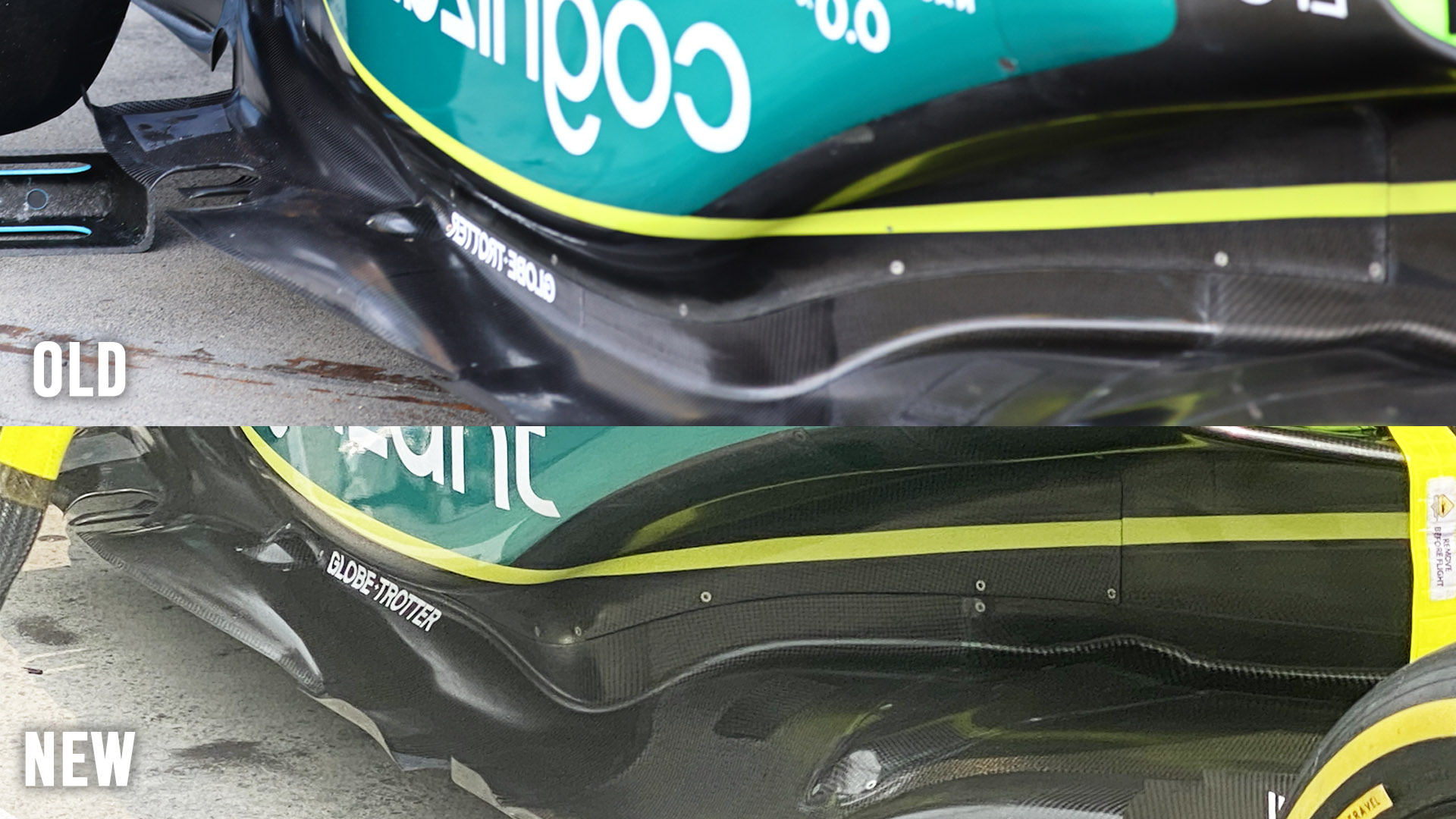
Overall, you could say Aston Martin has exploited all of the aerodynamic surfaces just that little bit more with these changes.
One area it will have focused on will be overall efficiency. If anything, Aston Martin could do with finding a little bit of straightline speed for a given downforce level and Montreal is a circuit where that compromise will be doubly important.
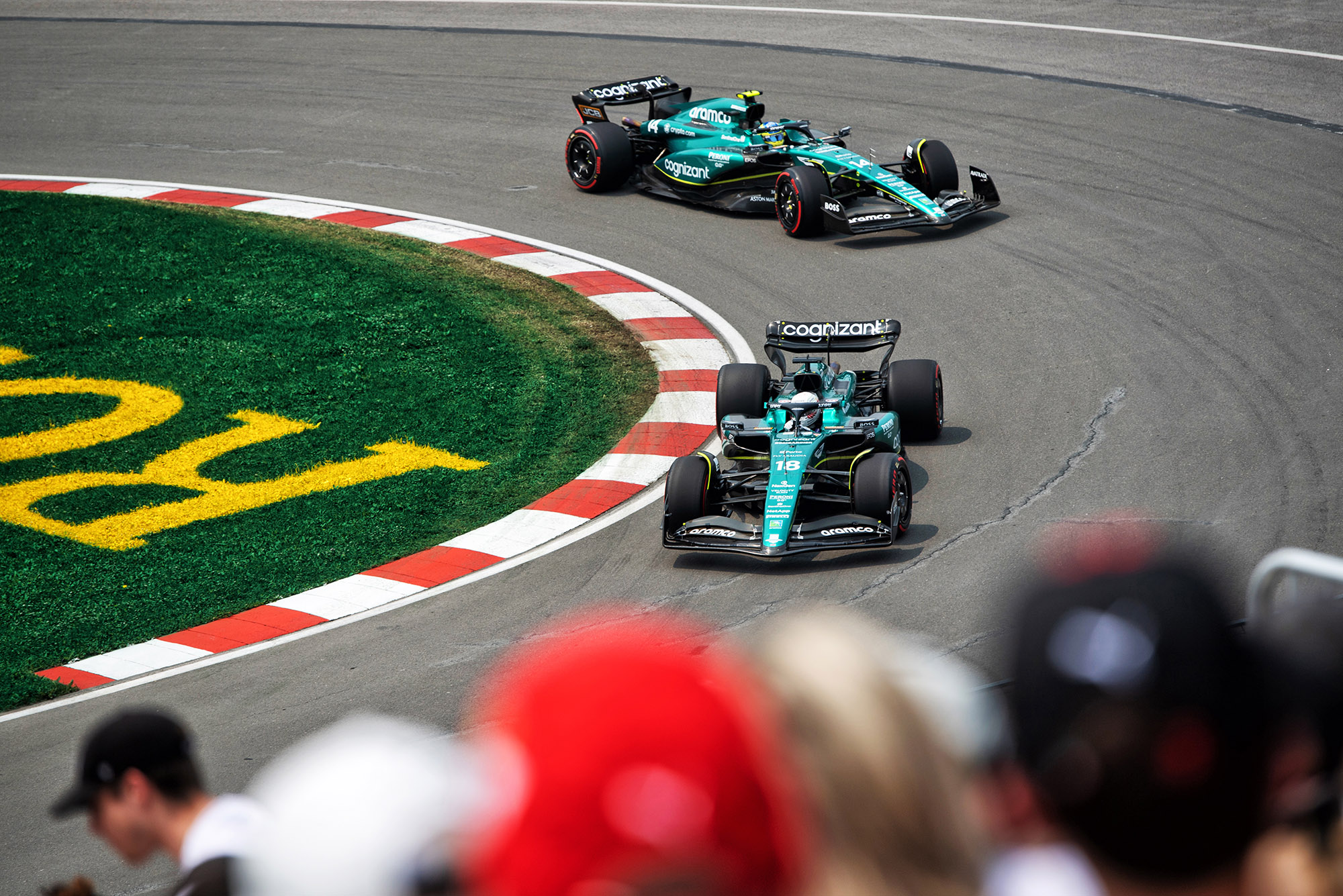
Montreal is about straightline speed stability under braking, change of direction, good traction and as much downforce as you can get from the underfloor at slower speeds which by definition mean higher ride heights. You don’t have any of those fast corners that you have at Barcelona.
Looking more closely at the changes, they are mainly to the underfloor, which as normal we can’t see much of, the sidepods and engine cover.
The sidepod leading edge undercut looks a bit more dramatic. This will turn the airflow outwards more aggressively, highlighted with the red arrows in the image below.
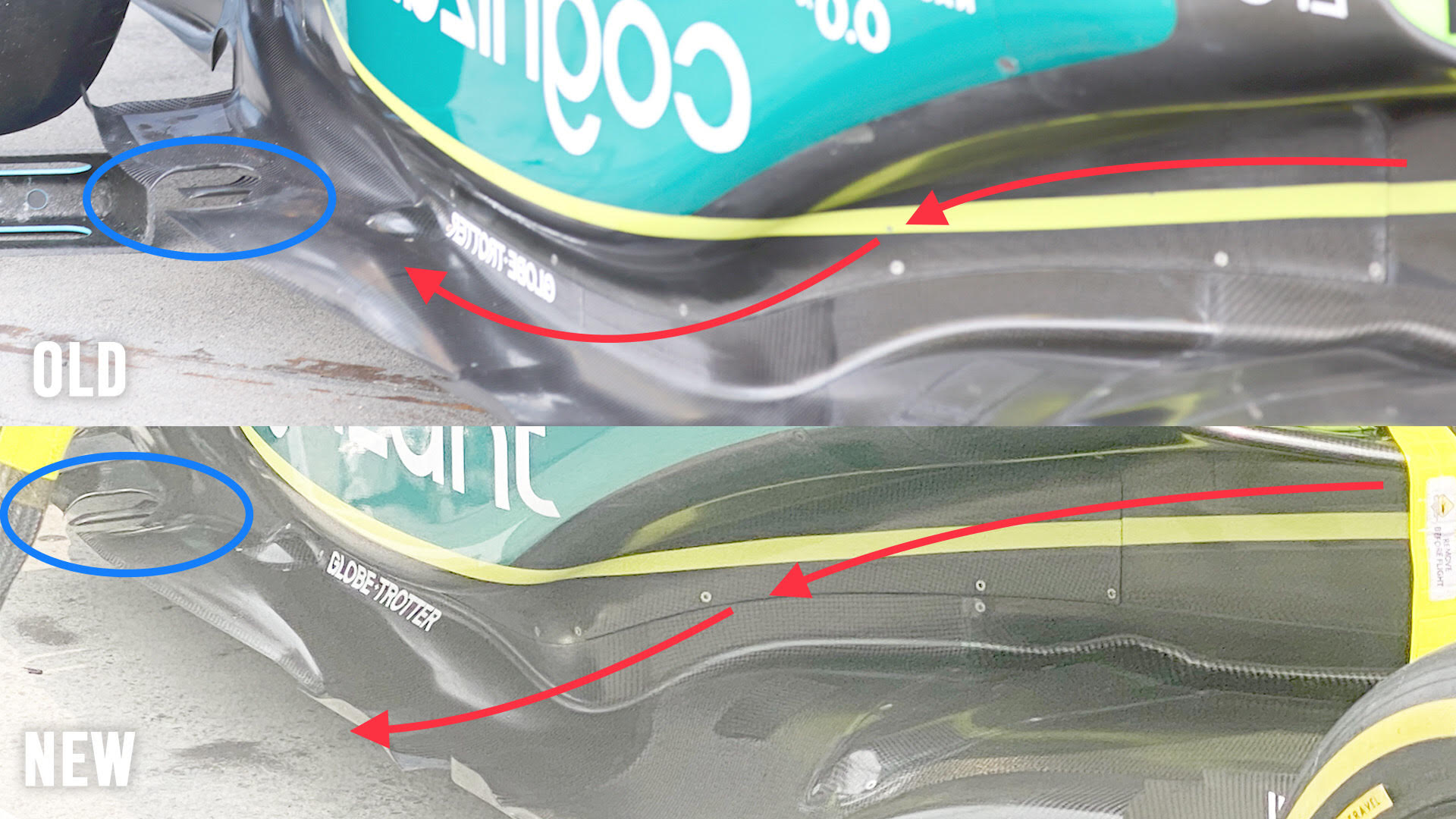
This will work these small turning vanes on the outer edge of the floor harder, producing a stronger vortex. This, in turn, will seal the sides of the floor further rearward, allowing the underfloor to produce more downforce especially at higher ride heights.
The small vane in the opening highlighted with the blue ellipse in the image above is now the full width of the cutout. This component helps to define how the airflow going through that opening connects up with the airflow that is forced inwards or outwards as the rear tyre rotates onto the track surface. This is normally called tyre squirt.
The outer edge of the floor is still not as complicated as the Red Bull, but it’s all about optimising your understanding of what you have. It’s pointless just copying another team because it is winning, doing that can get you lost very quickly.
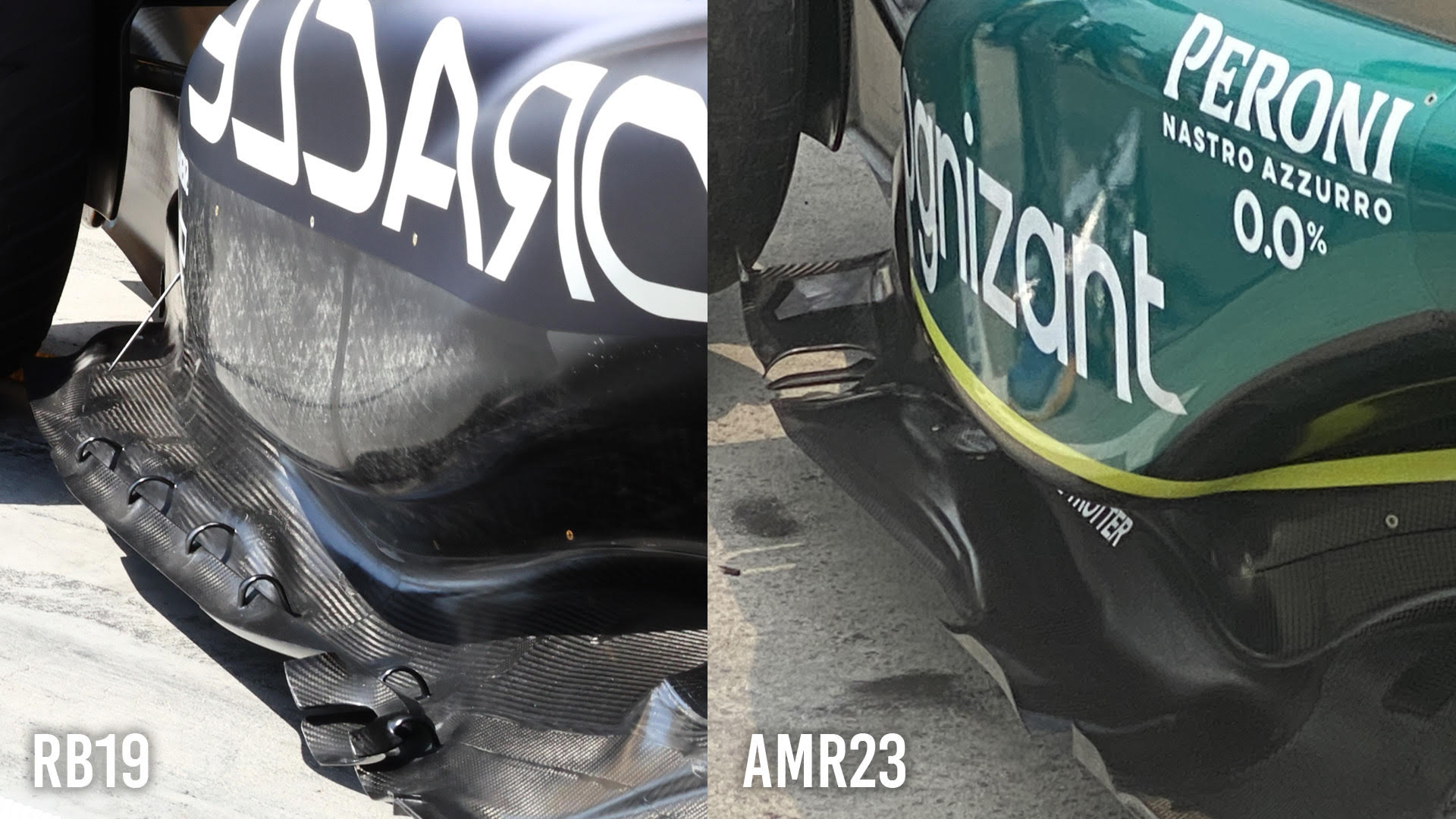
As for the sidepods, Aston Martin has redefined the inner gully that leads down into the central area of the diffuser. Getting flow into that area helps with the performance and consistency of the diffuser, especially at low ride heights or high speed.
If you can achieve that, then you can work the diffuser harder. This means that you will have more downforce from the underfloor at higher ride heights without running into problems at low ride height.
The thing is you can’t push airflow down into that area, you have to open up a duct that allows the low pressure at the trailing edge of the diffuser central area to pull flow into it. This will also be a drag reduction when the car is at high speed with low ride heights.
As you can see with the magenta arrows on the image below, the old version had a constricting duct. The new version is more parallel, meaning there will be less transverse flow when the diffuser is pulling in as much flow as it requires to keep it functioning correctly. The base fillet radius, side wall to base, is also larger, this change to the internal curvature again reducing the risk of generating turbulent flow.
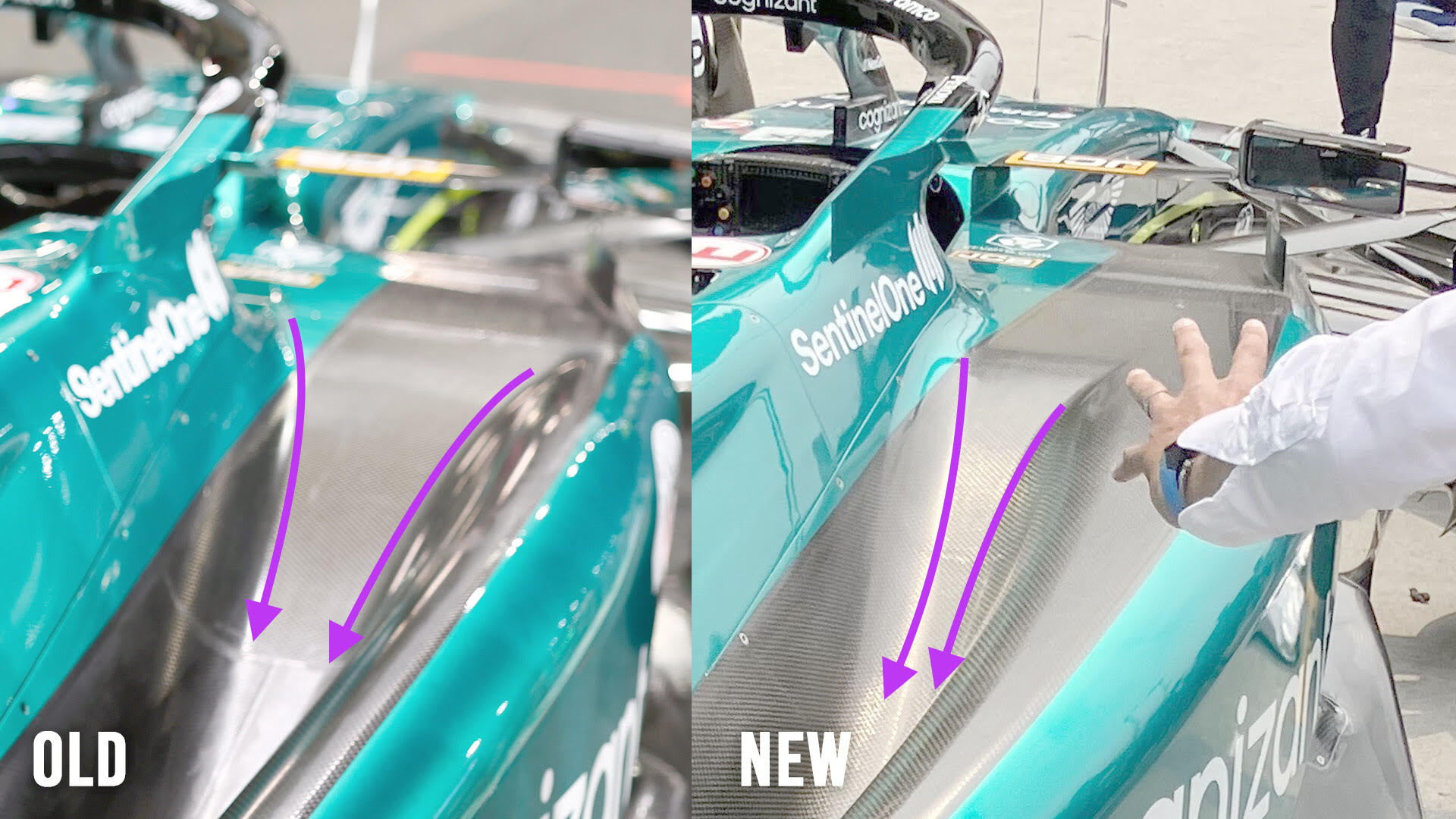
All of this should be a bit of a drag reduction, but more importantly it should improve the consistency of the downforce from the underfloor, especially at higher ride heights in these slow corners and under braking when the rear of the car rises up.
Montreal should give us a fairly decent indication of whether Aston Martin has achieved its goals. The car’s performance and Lawrence Stroll’s face should tell us all.


